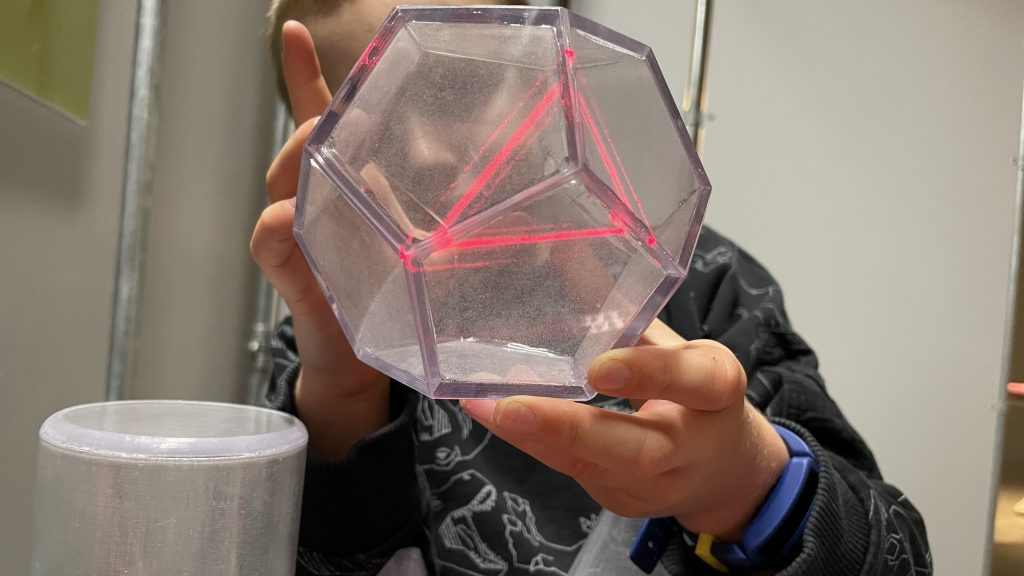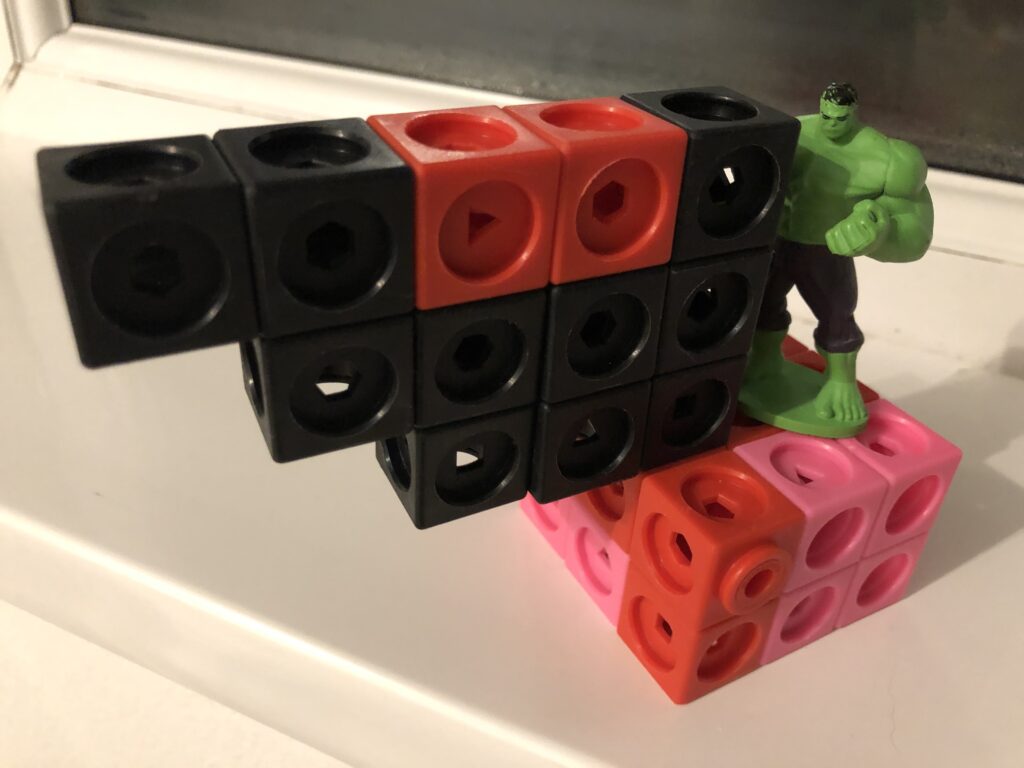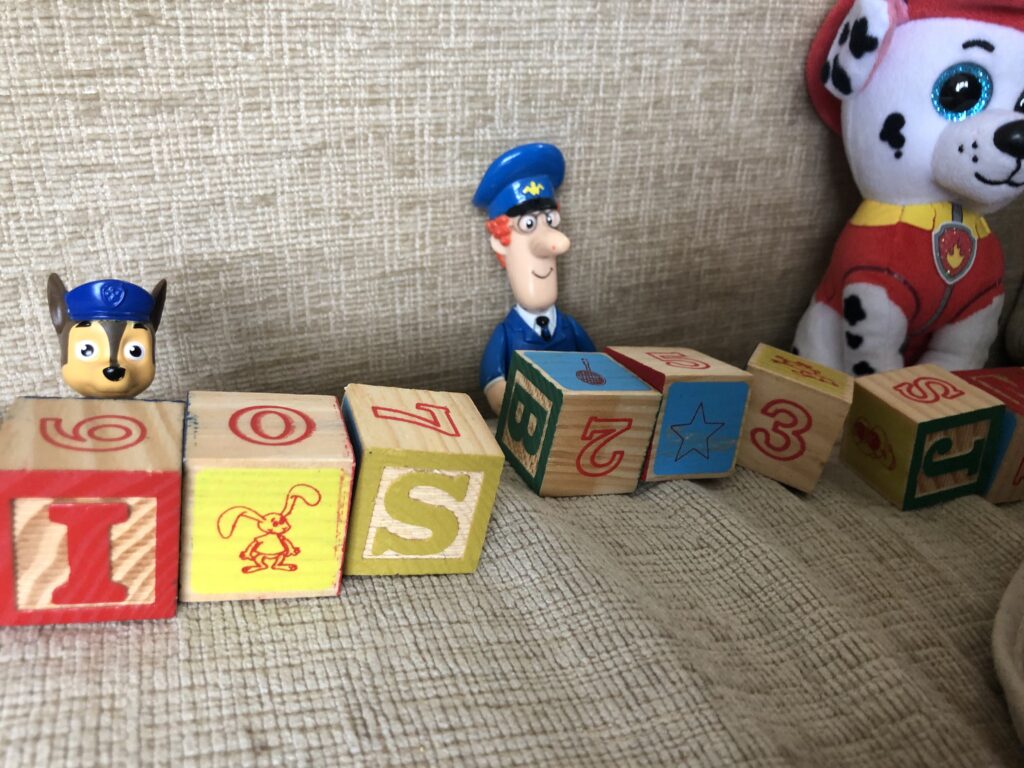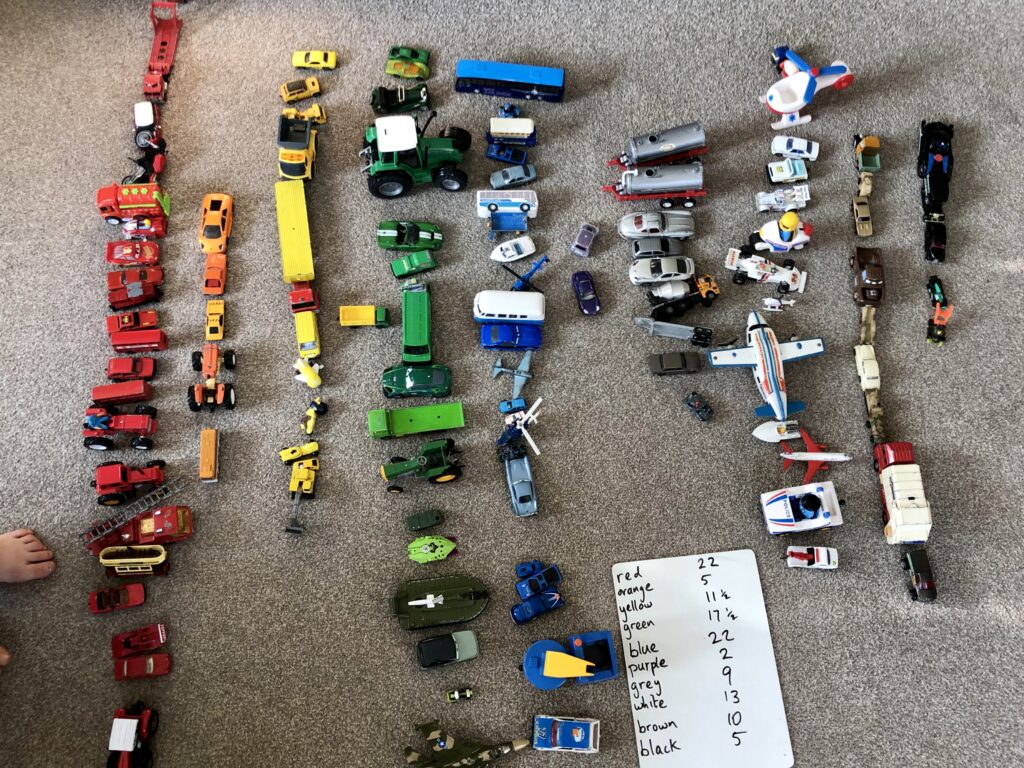Chris Sangwin and I wrote a LaTeX package for drawing Hex boards and games called hexboard. It can produce diagrams like this.
First: why? Then: how do you use it?
Chris Sangwin and I wrote a LaTeX package for drawing Hex boards and games called hexboard. It can produce diagrams like this.
First: why? Then: how do you use it?
One day in February 2014, I was fortunate enough to battle through London during a Tube strike to attend a reception at the House of Commons for MathsWorldUK – an initiative then just two years in development which aimed “to establish a national Mathematics Exploratorium in the United Kingdom … an interactive centre full of hands-on activities showcasing mathematics in all its aspects for people of all ages and backgrounds”.
That initiative took a huge leap forwards last week with the launch of MathsCity Leeds, which my son and I visited on its opening weekend.

A while ago I wrote an article based on my work in partially-automated assessment. The accepted manuscript I stored in my university’s repository has just lifted its embargo, meaning you can read what I wrote even if you don’t have access to the published version.
Thinking about assessment, it seems there are methods that are very good at determining a mark that is based on a student’s own work and not particularly dependent on who does the marking (call this ‘reliability’), like invigilated examinations and, to some extent, online tests/e-assessment (via randomised questions that are different for each student). These methods tend to assess short questions based on techniques with correct answers and perhaps therefore are more focused on what might be called procedural elements.
Then there are methods that are probably better at assessing conceptual depth and broader aspects that we might value in a professional mathematician, via setting complex and open-ended tasks with diverse submission formats (call this authenticity and relevance ‘validity’). People are often concerned about coursework because it is harder to establish whether the student really did the work they are submitting (not an unreasonable concern), which impacts reliability.
It is hard to ask students to complete high-validity coursework tasks (that might take weeks to complete) in exam conditions, and diverse submission formats do not suit automated marking, so two ways to improve reliability are not available. The idea with partially-automated assessment is that an e-assessment system can be used to set a coursework assignment with randomised elements which is then marked by hand, gaining the advantageous increase in reliability via individualised questions without triggering the disadvantage of having to ask for submission in a format a computer can mark. The payoff is that the marking is a bit more complex for the human who has to mark it, because each student is answering slightly different questions.
In the article I write about this method of assessment, use it in practice, and evaluate its use. It seems to go well, and I think partially-automated assessment is something useful to consider if you are assessing undergraduate mathematics.
Read the article: Partially-automated individualized assessment of higher education mathematics by Peter Rowlett. International Journal of Mathematical Education in Science and Technology, https://doi.org/10.1080/0020739X.2020.1822554 (published version; open access accepted version).

John Bibby points out a numeric coincidence – “Sean Connery died on 31/10/20. If you add up all the numbers in the date = 007”. Spooky, huh? I’m hoping you’re asking ‘is that unlikely?’ John asks “How many other dates this year add up to 007? What about in 2021?”
This is a fine pen-and-paper activity (or for thinking about in the shower, as I tried this morning), but also a nice little brute-force coding exercise.
A while ago on this blog I shared a LaTeX macro I had written for drawing games of Nim. I have now taken the plunge and written this into a LaTeX package called nimsticks. (Why? What do you do to relax on a lazy Sunday morning?)
Here is the description of the nimsticks package:
This LaTeX package provides commands
\drawnimstickto draw a single nim stick and\nimgamewhich represents games of multi-pile Nim. Nim sticks are drawn with a little random wobble so they look ‘thrown together’ and not too regular.
What this does it allows commands such as \nimgame{5,3,4} which renders like this:

A while ago, my son did the Prime Climb colouring sheet.

I was recently asked for my advice for encouraging maths play with a young child. I should start by saying I’m not qualified to talk about this with authority – I teach mathematics, but to undergraduates. The closest thing I have to relevant experience is playing with my son who is nearly 5, so I can share a little about that.
So how do we encourage mathematical play with my son? I don’t mean to get all philosophical, but what is maths really? Many people think maths is numbers and counting, which is true of course. Maths is built on arithmetic like literature is built on spelling and handwriting, so it’s important but not the whole picture. Maths is also patterns and shapes, structure and order, classifying objects and their properties, … and it can be very playful.
Through nursery and his start at school, I’ve never been concerned with teaching my son things he will later learn at school, because he’s a bright boy and already knowing what the teachers are covering is a recipe for switching off his love of learning and making him misbehave in class. But I think there is a lot that can be done to strengthen his deep understanding in ways that won’t interfere when he comes to learn times tables, or whatever. (There are some caveats here: I’m not totally sure what is on the National Curriculum, and he sometimes plays his own way into curricular topics, as we’ll see with multiplication later.)
I have never done anything very structured. Mostly we played, often following his lead, somewhat inspired by things I’d seen on the #tmwyk hashtag on Twitter. Here I’ll waffle through a few suggestions.
First and foremost: watch Numberblocks on CBeebies. We weren’t big on TV or screens when he was young, and still aren’t really, but Numberblocks is amazing. You must start with episode 1, which introduces number 1, and go from there. Episodes are only 5 minutes long. It quickly introduces numbers 2-5 and then has adventures with them, then 6-10, and so on. It taught him loads about numbers and also gave him a context to understand arithmetic operations. Later episodes gave him a serious interest in big numbers. I suggest you don’t rush through, rewatch earlier episodes if needed before moving on, and definitely watch together and try to talk about the ideas. Look for the numbers around the house. When an episode introduces 3, ask how many groups of 3 things you can find around the house, etc.
I think the best thing we did for him was buy a set of 100 Mathlink Cubes. These are coloured cubes which join together. He used to spend a lot of time playing with these on his own and with us, making the Numberblocks characters and taking them on adventures, counting them, making colour patterns with them, making shapes with them. Then Katie Steckles kindly bought us Kyle D. Evans’ book Here Come The Numbers, which goes into how to arrange numbers in squares and rectangles, and raises the issue of numbers that can’t be arranged like this, even naming these primes. This gave him a really effective way to understand how numbers work. I think it’s good he has developed his own understanding of how blocks can be arranged into squares and rectangles, even if he doesn’t know he’s multiplying. It also gave him marvellous insight into spacial awareness and symmetry by building shapes, copying shapes I’d built, etc. He still uses the blocks, mostly to build space ships for his other toys to have adventures in – always with a lovely pattern of colours and a symmetric shape. He also plays with magnetic tiles, pattern blocks and Cuisenaire rods, but the Mathlink cubes came first.

There’s a concept called number sense, which is an understanding of how numbers work, their order, magnitude, etc. which can be helped by counting objects, asking which pile of objects has more in it, counting things in groups, etc. Sometimes we’d count number blocks, or match other objects to number blocks, or just count objects directly. How many socks does he have? How many teddies are coming to the tea party? etc.

It’s good to practice counting by chanting numbers in order, using books (although books always stop at 10 and I’d always count to 12 because time uses 12 and I don’t want him to have an uncertainty about 11 and 12) or counting objects, and trying to learn that you tap the objects as you count them in 1-to-1 correspondence. He could tell the time to the nearest hour from an analogue clock when he was 2 by recognising which numbers the little hand was between. He went through a period where he loved doing dot-to-dot puzzles, which are about joining the numbered dots in the right numerical order. At one point nursery were keen that he learns he can count abstract things that aren’t physical objects as well, so we used to count processes. How many parts are there to the morning routine (brush teeth, wash face, put clothes on, …)? How many stages are there to cross the road (hold hands, stand at the edge, look one way, …)?

But while you’re counting, you can also talk about the properties of objects and the patterns they form. We have made ‘object graphs‘, which is where you classify things according to some attribute you decide on together and group the objects accordingly. For example, I grabbed a couple of handfuls of Lego and we arranged it by colour (so x axis colour, y axis frequency, though I didn’t use that language). This is exploring the properties of objects and classifying things. Then we counted each group to see which colour we had the most of. We’ve also done the same with different kinds of toys – Star Wars, dinosaurs, cars, etc. You can arrange the same objects using different classifications, which gets into how the same object can have multiple characteristics – this green dinosaur has two legs, but the other green dinosaur has four legs, etc. All this thinking about properties of objects is very mathematical. We used to play I-spy long before he could read by e.g. “I spy with my little eye something that’s red/round/tall/etc.” Again, classifying properties of objects. Just recently, we’ve played with #vehiclechat, which proved to be good fun thinking about definitions and classifications.
There’s a good pair of books called How Many? and Which One Doesn’t Belong? The latter in particular is amazing. The idea is that there are four objects and each has a plausible reason why it could be the odd one out, so there is no wrong answer but it’s just about talking properties and justifying your answer. My son really enjoys coming up with a reason for each of the four objects in a Which One Doesn’t Belong? Recently he has started making his own Which One Doesn’t Belong? puzzles from pattern blocks.
Apart from this, I am quite serious about maths being interlinked with other areas, especially at this age. We explored patterns by reading poems or story books and talking about words that rhyme, and making up nonsense words that rhyme with real words, etc. He asked what it is called when two words rhyme at the start, so he became a little boy with a good sense of alliteration. We’d play games on the walk to nursery where we’d take turns to say a word and the other would have to say a word that rhymed or alliterated with it. One day I told him about palindromes and he became obsessed, spotting them, inventing nonsense palindrome words, etc. This playing with language is good for his language, of course, but also it’s about patterns and properties, so it’s building that good foundation on which maths can grow.
This is just some rambly thoughts, but I hope it was interesting and helpful.